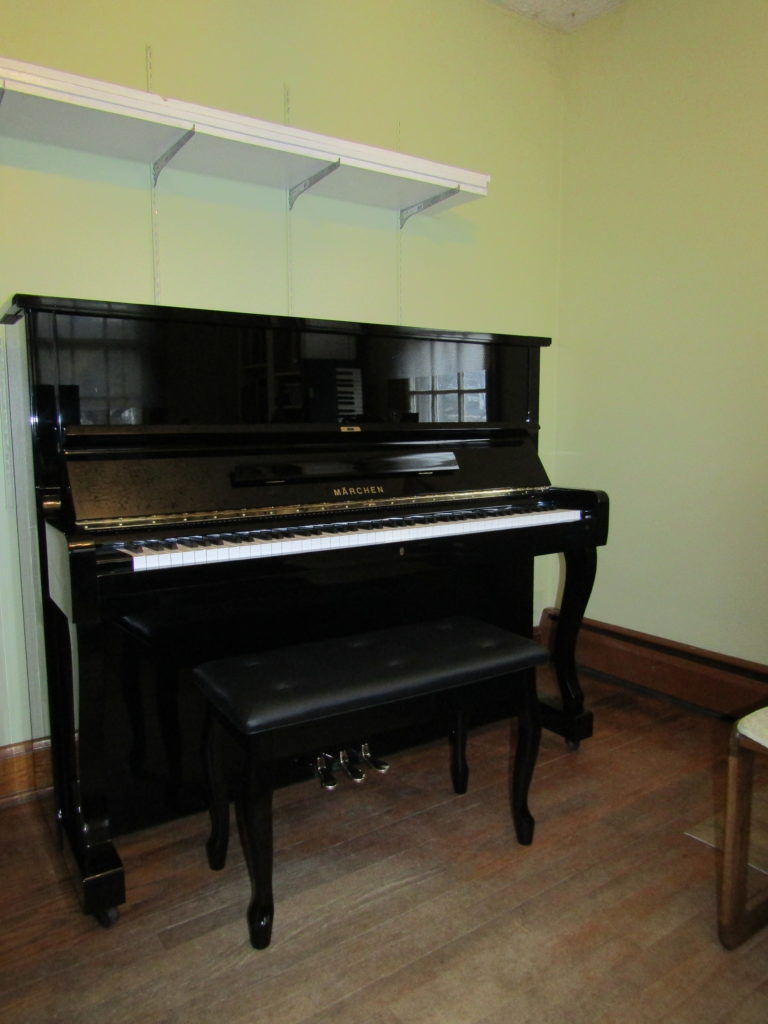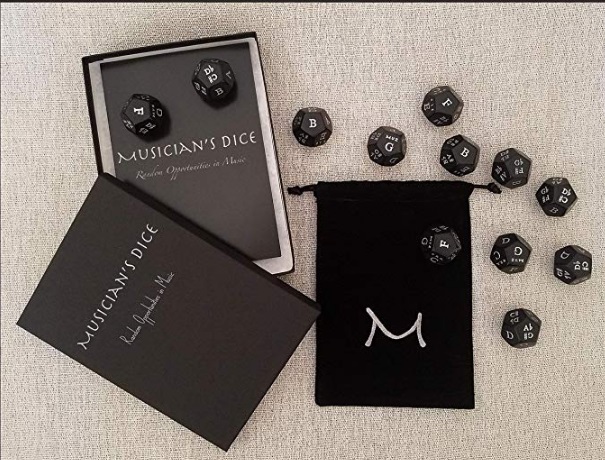Welcome to the Horsetail Nebula, an as-yet undiscovered location in a parallel universe!
Happy New Year 2019!
Much of my blogging for the past year has been over at my music theory blog. As of this fall I’m actually taking classes at the local community college. I don’t think I’ve picked up a game controller since the summer!
My current “game controller” looks like this. I have never had a piano before and it’s very challenging, but if I can play Dark Souls, I can do anything!
Here is another “game-like” tool I am using for music:
These are helpful for improvisation, or when you get stuck. You say a prayer to RNGsus and hope you get something interesting!
I was very inspired by the idea of composing music for my scenes in No Man’s Sky. The videos I have up (at Avie the Birdbrain Gamer) are a rough approximation of what I would like to be doing. I’m signed up for individual instruction in composing and as a result I’m trying to get all my ducks in a row for the NMS project. This blog has been very helpful in getting the chronology straight. My best (and most organized) game footage is what I took during the last week that universe existed (mid July 2018) — but I did want to include SOME material from before the burning of Neochadwickia. To help with the organization, I made video footage of my Discovery Logs the very last day the universe existed — so the information was totally up to date. It resulted in 29 pages of screen caps. Going through these 29 pages I did in fact find 300 planet names (the working title for my music composition is “The Last of the 300 Worlds”). However — now checking with this blog, I found that there were whole groups of planets and stars that were erased from the Discovery Log. I found the Nagu system — Naguxoisanorca, Rosperigosa, Noelgervay, Mantigervay — but the star had been renamed Nuguxoisa (the planet names remained). I am confused and amazed at what the software must have done every time there was a universe regeneration. How did it decide what info was kept and what was re-written?
I really don’t need to make a full documentation of my 400+ hours in the No Man’s Sky universe in order to compose music about it. But I did think that the process of writing up the 300 planet names and grabbing some screen caps would be straightforward. Instead it has led to a deep dive into a huge collection of (neatly labeled) jpgs and back to this blog!
Somewhere I also have a 3-ring binder full of notes I took while filming. I’m not sure if that info will be helpful at this stage or not (or am I just going down the rabbit hole into completionism?)
I did have a wonderful time last night sorting through pictures til 4 in the morning. There were some spectacular planets I had completely forgotten about.
For the first part of the film I plan to have a series of kaleidoscope images, made from NMS scenes — starting with deepest black, then add stars, nebulas, dark blue horizons….through violet, red, orange, yellow and finally the white-hot death of the universe. I like the idea that my memories and experiences in NMS form a collage (rather than a neat photo album) in my head. I think the music will also be collage-like rather than a literal description of the 400 hrs. ;)
Hilarity and Insanity
I just discovered a guy who has made a “Pacifist Run” of Dark Souls 1. His Youtube name is Sol the Cleric. He accomplishes much of his playthrough by running right past the gauntlet of NPCs (non player characters) — running at BREAKNECK speed with a series of PERFECTLY timed dodges, rolls and flying leaps. His skill is breathtaking. Some enemies do have to be eliminated in order to advance the story line of the game; but instead of battling them himself, Sol the Cleric exploits weaknesses in their “pathfinding” (the character’s artificial intelligence). For example, the Taurus Demon frequently jump backwards. Sol made sure that for one of these jumps, the Taurus Demon was standing on the edge of a cliff. In the case of Dragon Slayer Ornstein, Sol took advantage of one particular move where the character starts an attack and then has to move forward (can’t stop himself once he’s started the move). Sol tricked Ornstein into attacking when there was a wall nearby. Because of the way Dark Souls is animated, Ornstein “clipped” right through the wall — and fell hundreds of feet down a mountain.
When absolutely necessary, our green-haired pacifist hero enlists the help of another NPC to battle the enemy. Each NPC has its own strengths and weaknesses, its own pathfinding and move set. You have to know, like, every molecule of the game to make this work.
Sol gets through THE ENTIRE GAME this way. It’s like watching someone ride a unicycle backwards through rush hour traffic.
I think if I had watched these videos a couple of years ago I would have found them baffling. The flying jumps are cool, but why is he running around in circles like that? Why is he locking some of the NPCs up and then letting them out again? But now that I’ve played parts of the game myself (and watched the rest of it through Daniel Floyd’s Extra Play series) I have expectations for how to approach each chapter of the game. Sol the Cleric turns these expectations upside-down. Then inside out. Then backwards.
It has been a really, really long time since I have laughed that hard!
After watching these videos I’ve tried some of the same techniques myself. Running past enemies (instead of painstakingly picking them off one at a time) is exhilarating and hilarious. I’ve had several incidents of “Roadrunner physics” where I really should have fallen off a cliff but the game let me run off the edge for a few steps. “OMG!!! whew!!! that was close!!!” I’ve also enjoyed figuring out which enemies can be parried in such a way that they bounce right off my shield to their doom.
Part of the charm of these videos is the droll humor and the “macaroni” accent.
“So, please…..enjoy.”
Orreries and Fresnel Lenses
I have been thinking of creating an environment in Unreal 4 that has a collection of beautiful science gizmos in it. It is easy to imagine what this kind of room would look like, but I’m sure the process of creating and then animating each object (in game terminology, “asset”) would take hundreds of hours. It’s like looking at a huge oil painting in a museum and saying “I’d like to make a painting like that!”
I can dream, though…meanwhile, here are some cool science gizmos.
Things that were difficult to animate
My current favorite game, Dark Souls 1, does some animation very well, and in other places takes shortcuts. For example, water and slime look very realistic. This shiny visual effect is called “specularity”. Characters’ hair, however, is tied back and immobile to keep things simple — flowing hair is very graphics-intensive. The flowing cloaks of the Baldur knights were animated using the physics engine Havok, and they don’t look quite right. From what I understand, the Havok engine has made a lot of progress since DS1.
Artificial Intelligence in Pac Man
The designers got some complex behaviors with some simple AI rules.
Dark Souls in game camera
Camera-moving mod for Dark Souls
https://www.mediafire.com/file/yvcl0hsaz7gcze8/DARKSOULS.CT
mentioned in this video
Dark Souls playlist — Developer Mode
Dark Souls — An Unreachable Village
This is the area you can see off in the distance when you stand on the cliffs by Firelink Shrine. I had guessed that these buildings were just painted in as background, but no — they are actual structures! You need special software to get there. The guy who made the vid said that he was using “Developer Mode”. No idea what that is, but I WANT IT.
Dark Souls — Distant Views Explained
Did you know that you can see Firelink Shrine from Blighttown?
*http://illusorywall.tumblr.com/post/132589360859/dark-souls-1-distant-views-explained-part-1
Dark Souls — Exploring the Map
Here is software that enables you to move your camera through a model of the Dark Souls landscape. It is based on the “collision data” which I think means only the parts of the environment that you or a weapon or projectile could touch.
https://kayin.moe/?p=2249


